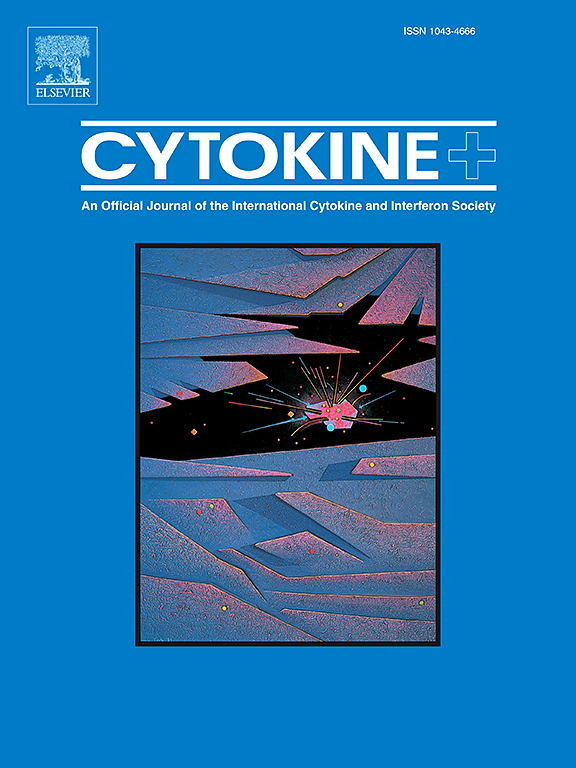以髓系树突状细胞恢复为特征的免疫恢复代表了甲基强的松龙治疗对HBV-ACLF患者的有利反应:一项前瞻性队列研究
IF 3.7
3区 医学
Q2 BIOCHEMISTRY & MOLECULAR BIOLOGY
引用次数: 0
摘要
背景甲基强的松龙(MP)在乙型肝炎病毒相关的急性-慢性肝衰竭(HBV-ACLF)中的应用仍存在争议。我们旨在探讨MP治疗HBV-ACLF期间树突状细胞(dc)的变化,以指导MP的使用,改善患者的预后。方法将HBV-ACLF患者前瞻性分为静脉注射甲基强的松龙组(前3天1.5 mg/kg/天,后2天1 mg/kg/天,后2天0.5 mg/kg/天,MP组,n = 36)加标准治疗或仅标准治疗(CM组,n = 34)。在基线(第0天)、第3天、第7天、第10天、第14天、第28天,然后按月直至第3个月测量表型[髓样和浆细胞样DCs (mDCs、pDCs)]和DCs功能(IL-12和IFN-α产生)。评估患者生存至第90天。结果MP组患者3个月生存率明显高于对照组(72.0% vs 35.5%,P <;0.01)。MP组dc的表型和功能均受到抑制。与基线时的幸存者相比,非幸存者的mDCs计数较低。在第7天mDCs计数下降和从第10天开始mDCs计数持续增加的患者在MP治疗中表现出更好的结果。胆红素是MP组mDCs恢复的唯一相关因素(优势比,0.991;95%置信区间为0.984 ~ 0.999;p = 0.023)。结论甲基强的松龙可通过抑制循环mDCs计数改善HBV-ACLF预后。甲基强的松龙治疗后mDCs计数的恢复可能是一个有利的反应。我们可以考虑监测循环dc计数来指导在HBV-ACLF中使用MP,以改善患者的预后。本文章由计算机程序翻译,如有差异,请以英文原文为准。
The restoration of immunity characterized by the recovery of myeloid dendritic cells represent a favorable response to methylprednisolone therapy for HBV-ACLF patients: A prospective cohort study
Background
The use of methylprednisolone (MP) is still controversial for hepatitis B virus related acute-on-chronic liver failure (HBV-ACLF). We aimed to explore the change in dendritic cells (DCs) during MP treatment in HBV-ACLF to guide the use of MP to improve patient's prognosis.
Methods
Patients with HBV-ACLF were prospectively allocated to groups given methylprednisolone intravenously (1.5 mg/kg/day for the first 3 days, 1 mg/kg/day for the second 2 days, and 0.5 mg/kg/day for the last 2 days, MP group, n = 36) plus standard treatment or standard treatment only (CM group, n = 34). The phenotype [myeloid and plasmacytoid DCs (mDCs, pDCs)] and function of DCs (IL-12 and IFN-α production) were measured at baseline (0d), 3d, 7d, 10d, 14d, 28d, and then monthly until 3 months. Patients' survival was assessed until day 90.
Results
The 3-month survival rate was significantly higher in the MP group than the control (72.0 % vs. 35.5 %,P < 0.01). The phenotype and function of DCs were suppressed in the MP group. The mDCs counts was lower in non-survivors compared to survivors at baseline. Patients with a decline in mDCs counts at the 7th day and a continuous increase in mDCs counts from the 10th day presented a better outcome for patients with MP treatment. Bilirubin was the only relative factor for the restoration of mDCs in the MP group (odds ratio, 0.991; 95 % confidence interval, 0.984–0.999; P = 0.023).
Conclusions
Methylprednisolone could improve the outcome of HBV-ACLF by inhibiting the circulating mDCs counts. And the recovery of mDCs counts after methylprednisolone treatment could represent a favorable response. We can consider monitoring the circulating DCs counts to guide the use of MP in HBV-ACLF in order to improve patient outcomes.
求助全文
通过发布文献求助,成功后即可免费获取论文全文。
去求助
来源期刊

Cytokine
医学-免疫学
CiteScore
7.60
自引率
2.60%
发文量
262
审稿时长
48 days
期刊介绍:
The journal Cytokine has an open access mirror journal Cytokine: X, sharing the same aims and scope, editorial team, submission system and rigorous peer review.
* Devoted exclusively to the study of the molecular biology, genetics, biochemistry, immunology, genome-wide association studies, pathobiology, diagnostic and clinical applications of all known interleukins, hematopoietic factors, growth factors, cytotoxins, interferons, new cytokines, and chemokines, Cytokine provides comprehensive coverage of cytokines and their mechanisms of actions, 12 times a year by publishing original high quality refereed scientific papers from prominent investigators in both the academic and industrial sectors.
We will publish 3 major types of manuscripts:
1) Original manuscripts describing research results.
2) Basic and clinical reviews describing cytokine actions and regulation.
3) Short commentaries/perspectives on recently published aspects of cytokines, pathogenesis and clinical results.
 求助内容:
求助内容: 应助结果提醒方式:
应助结果提醒方式:


